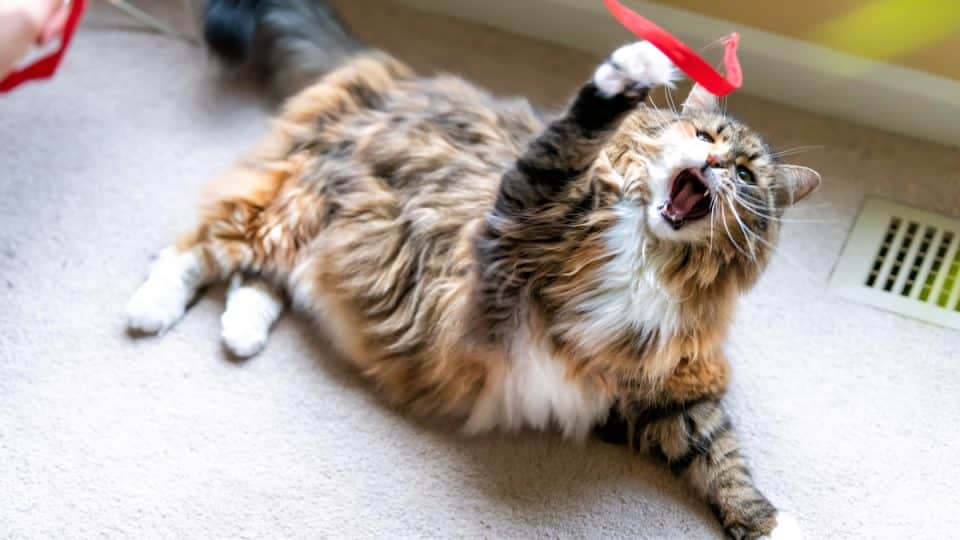Most cat lovers agree that there’s nothing better than snuggling up with their cat for a cuddle, but what if the cat doesn’t even fit in your lap? Most domestic cats weigh between three and five kilograms, but the largest breeds can weigh double that!
The largest domestic cat breed in the UK is the Maine Coon, but the tallest is the Savannah Cat. In addition to the Maine Coon and Savannah, there are plenty of other larger-than-average cat breeds in the UK. From the ever-popular British Shorthair to the water-loving Turkish Van, we’ve rounded up nine of the most popular large domestic cat breeds in the UK.
These breeds sometimes need a little extra care and attention, so we’ve also included some expert advice on what pet parents need to consider before bringing home the biggest cat breeds.
We’ve rounded up the nine biggest cat breeds in the UK, including details about their height, weight, and other essential characteristics.
The current world record for the longest domestic cat is held by Maine Coon, Barivel, coming in at 120 centimetres (cm) long. The record for tallest cat belongs to the Savannah, Fenrir, who stands at a whopping 47.83 cm. However, plenty others meet the description of a large breed, and they differ in fascinating ways.
1. British Shorthair
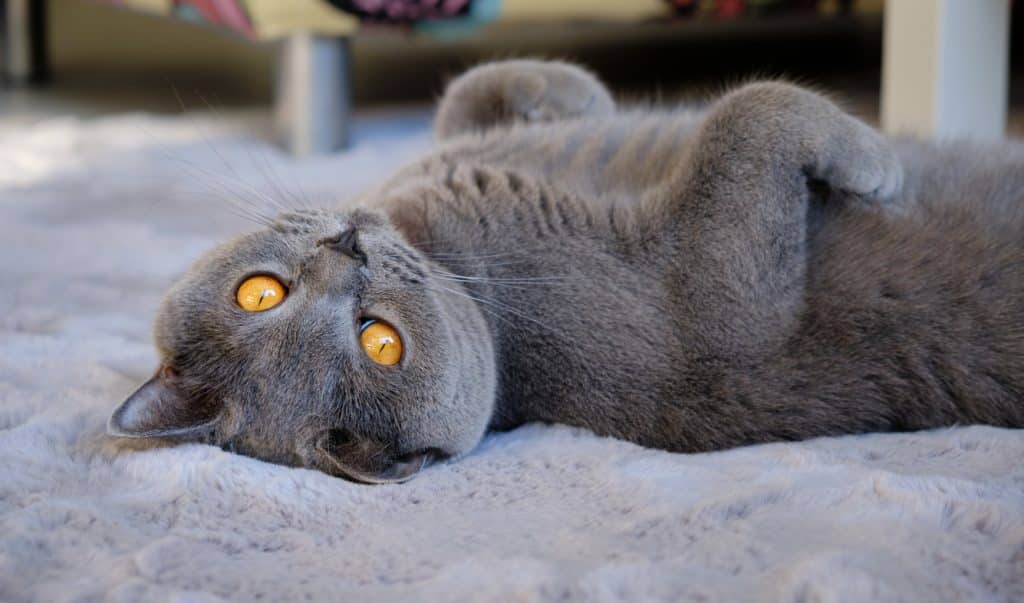
iStock/Mariusz Wos
- Height: 28-35 cm
- Weight: 3-7.7 kilograms (kg)
- Coat: Shorthaired
- Colour: Most solid and patterned colours, with and without white markings
- Life expectancy: 12-17 years
- Personality: Easygoing, relaxed, and affectionate
- Vocal Level: Low
- Potential issues: Needs plenty of outdoor space
This breed makes the perfect family cat, as they love hanging out with people and other animals. They’re also happy to relax at home on their own, although they may need a little encouragement to exercise. British Shorthair cats are known for their short plush coats, which have a soft, velvety texture. While they come in all sorts of colours, grey is one of the most common. While some cats of this breed enjoy short play sessions, others take relaxing to the max!
2. Ragdoll
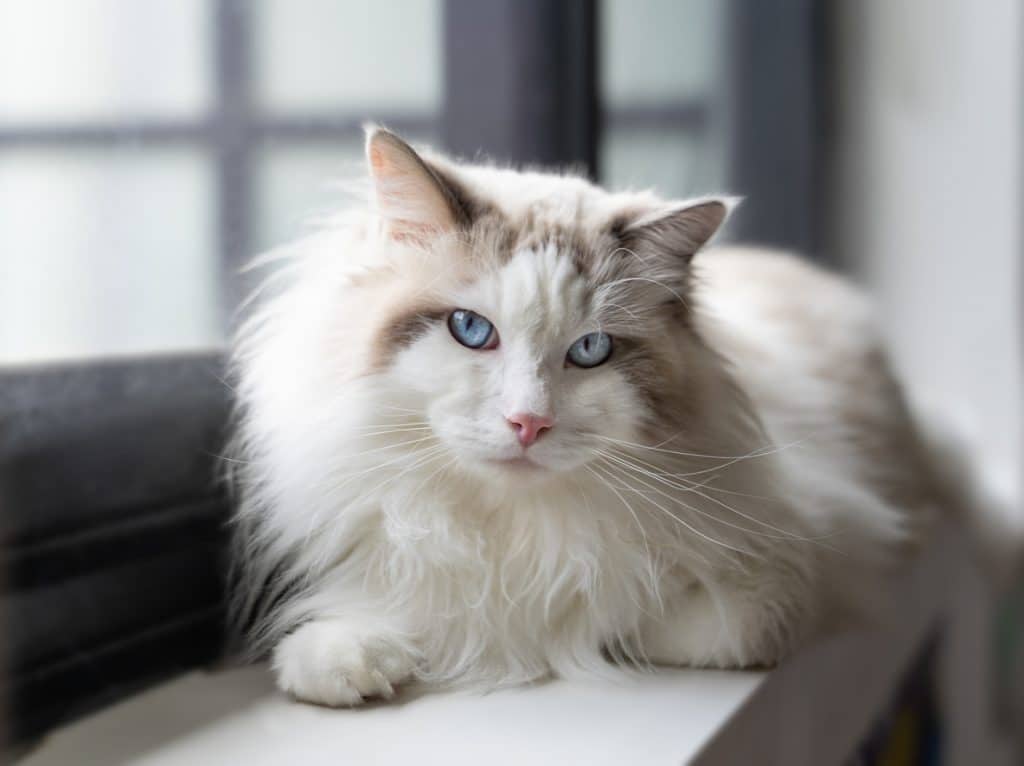
iStock/Julia Gomina
- Height: 22-28 cm
- Weight: 4.5-9 kg
- Coat: Semi-longhaired
- Colour: Four colours and three patterns
- Life expectancy: 12-17 years
- Personality: Friendly, curious, and relaxed
- Vocal Level: Medium
- Potential issues: Can suffer from specific health conditions, tend to be a little lazy
The adorable Ragdoll is instantly recognisable thanks to their blue eyes and distinctive, soft-coloured coats. The breed is also famed for their calm nature, which makes them a joy to be around. Ragdolls love human company and will happily follow their pet parents around, watching you complete your day-to-day activities. They prefer company but are equally happy to be left alone for a few hours each day.
3. Maine Coon
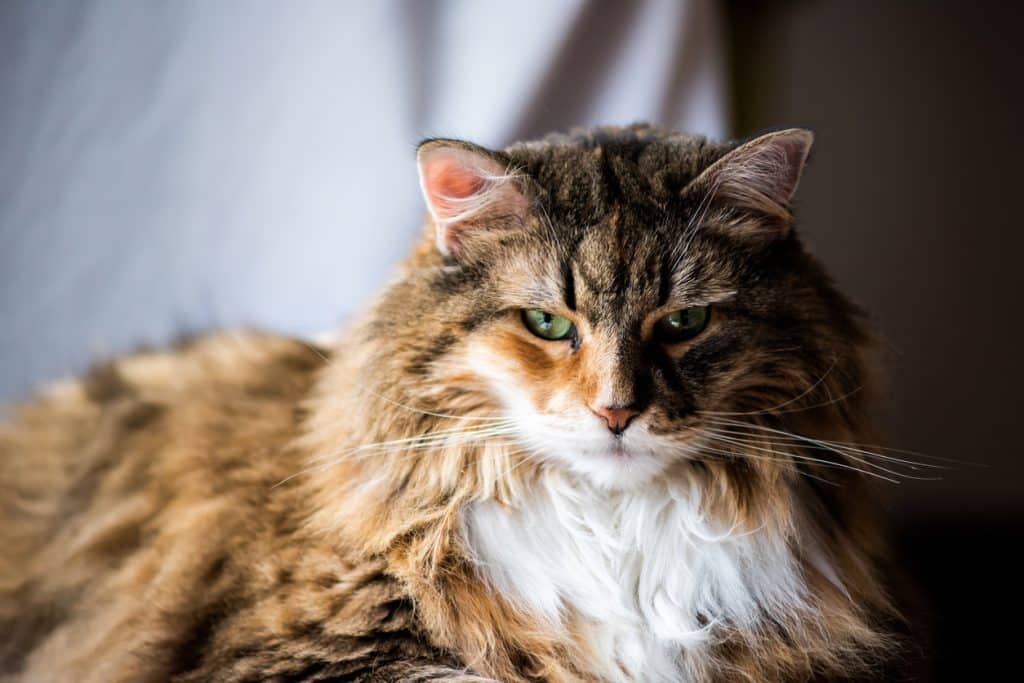
krblokhin via iStock
- Height: 25-40 cm
- Weight: 4-10 kg
- Coat: Semi-longhaired
- Colour: Wide range of colours and patterns
- Life expectancy: 9-15 years
- Personality: Curious, active, and sociable
- Vocal Level: High
- Potential issues: Significant grooming needs, can suffer from some health issues
The Maine Coon is one of the best-known large cat breeds the world over. This is partly due to their huge size: they can reach up to 8 kg once fully grown! But it’s also down to their engaging personality. This breed loves human company and makes a great family cat for first-time pet parents. Their waterproof coat does need regular grooming sessions, especially as these active cats love to spend time outdoors.
4.Siberian
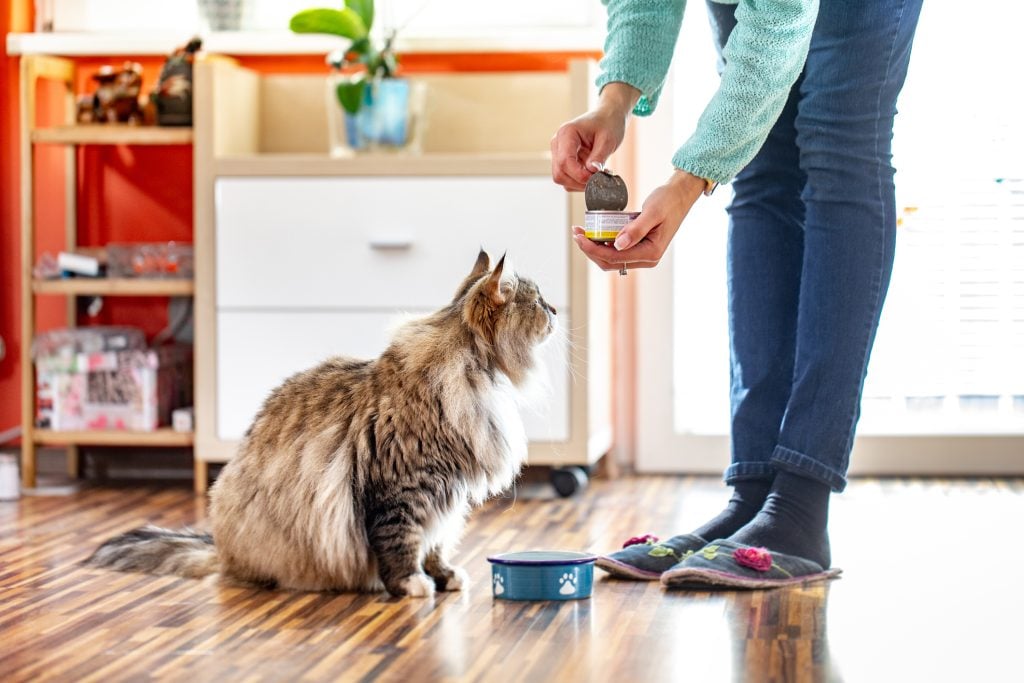
CasarsaGuru | iStock
- Height: 22-28 cm
- Weight: 3.5-7.5 kg
- Coat: Semi-longhaired
- Colour: Almost all colours, often with white markings
- Life expectancy: 11-18 years
- Personality: Loyal, affectionate, and curious
- Vocal Level: Low
- Potential issues: Can be reserved with strangers, need plenty of space
The Siberian has a regal and slightly reserved air, but once they get to know you, their playful side doesn’t take long to come out. These large cats are powerful jumpers and enjoy finding high-up spots, so they need plenty of climbing opportunities! They also love playing and can be trained to fetch their toys. When they’re not playing or exploring, Siberians are gentle and loving, getting along with all members of their family equally.
5. Norwegian Forest Cat
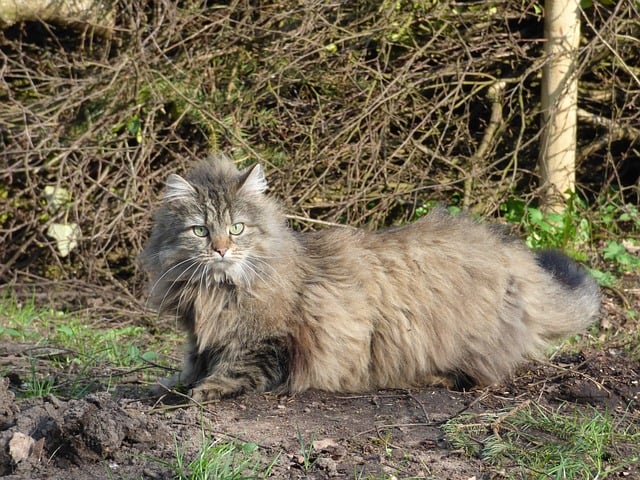
Sabine Lase via iStock
- Height: 22-30 cm
- Weight: 5.5-10 kg
- Coat: Semi-longhaired
- Colour: All colours and patterns except Siamese, chocolate, lilac, cinnamon, and fawn
- Life expectancy: 12-15 years
- Personality: Affectionate, calm, and adaptable
- Vocal Level: High
- Potential issues: Can be nervous around visitors, need a lot of outdoor space to roam
Also known as the “Skogkatt” or “Wegie”, this breed can weigh up to 10 kilograms, although most cats usually weigh around 8 kg once fully mature. These calm cats love companionship but don’t always enjoy sitting on your lap, preferring to stay close by. Wegies are curious and intelligent, so benefit from plenty of mental stimulation. They also enjoy spending lots of time outdoors, with their thick waterproof coat protecting them from the elements.
6. Ragamuffin
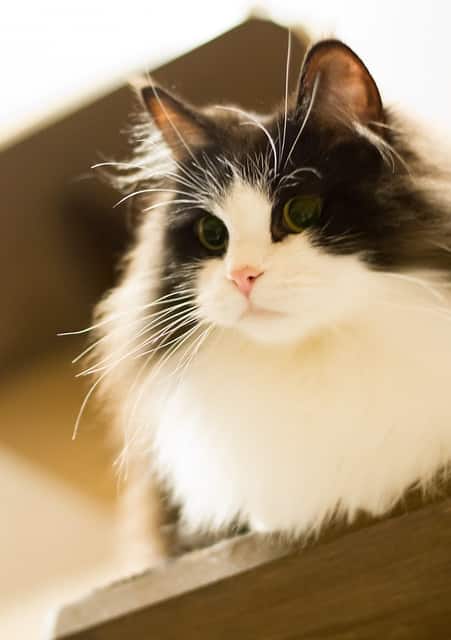
Ragamuffin – Flickr
- Height: 22-28 cm
- Weight: 3.5-9 kg
- Coat: Semi-longhaired
- Colour: All colours, markings, and patterns
- Life expectancy: 12-17 years
- Personality: Playful, sociable, and patient
- Vocal Level: Low
- Potential issues: Slow to mature, can need encouragement to exercise
The Ragamuffin is an affectionate, curious, and playful breed that makes an ideal choice for first-time pet parents. This breed was developed from the Ragdoll, and Ragamuffin cats are equally happy spending time with their families or relaxing at home when you’re gone for the day. As a slow-maturing breed, they may need kitten food for longer than most other breeds. Their relaxed attitude to life means pet parents need to keep an eye on their weight and encourage plenty of movement.
7. Turkish Van
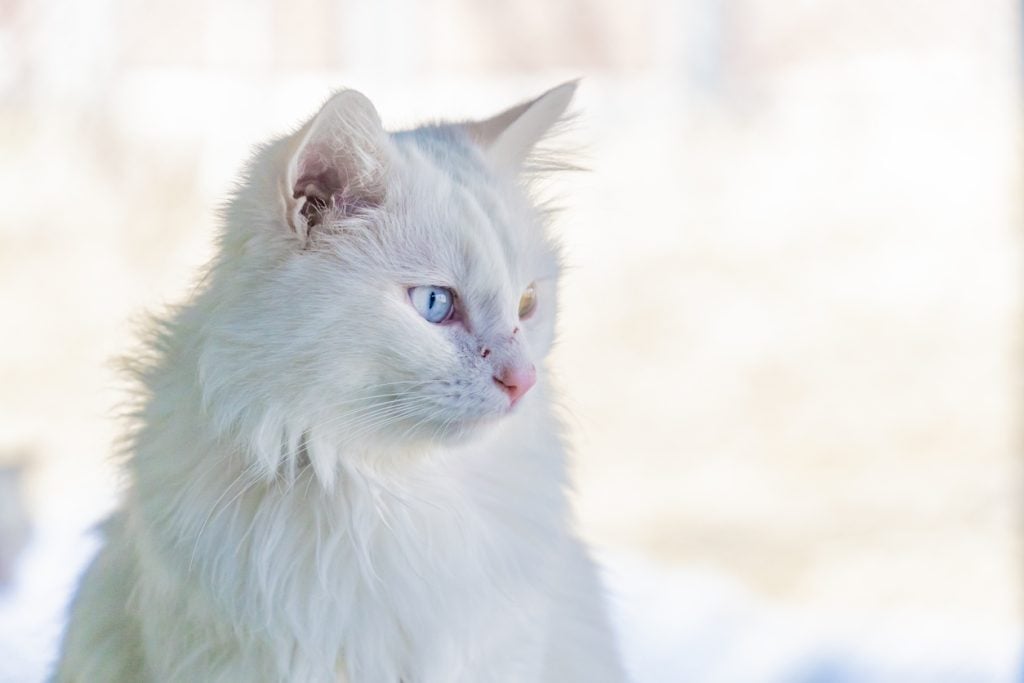
0804Creative via iStock
- Height: 22-28 cm
- Weight: 4.5-8 kg
- Coat: Semi-longhaired
- Colour: White bodies with coloured head and tail
- Life expectancy: 12-17 years
- Personality: Playful, active, and friendly
- Vocal Level: Low
- Potential issues: A very active breed that needs a lot of outdoor space
The Turkish Van has a distinctive colouring, with a white coat and a coloured head and tail. Another unusual trait of this breed is their love of water, which is why they’re known as the “swimming cat”. Turkish Vans are outgoing and intelligent cats that love spending time with their pet parents. They’re also extremely active and love being up high, so they need plenty of space to roam, plus opportunities to climb.
Large Cat Breed Popularity in the UK
Large cat breeds can be found all over the world, with some being more popular than others. In the UK, the most popular large cat breed by a wide margin is the British Shorthair. Over a quarter of all kittens registered yearly with the Governing Council of the Cat Fancy (GCCF) are British Shorthairs.
In 2023, the most popular large cat breeds registered in the UK with the GCCF were:
- British Shorthair
- Ragdoll
- Maine Coon
- Siberian
- Bengal
- Norwegian Forest Cat
- Ragamuffin
- Turkish Van
Hybrid Cats
Let’s continue our list by looking at some hybrid cat breeds. These develop when domestic cats are crossed with a wild cat breed and are often larger than other domestic cats.
Hybrid breeds are becoming more popular in the UK but do have some specific care requirements.
Savannah Cat
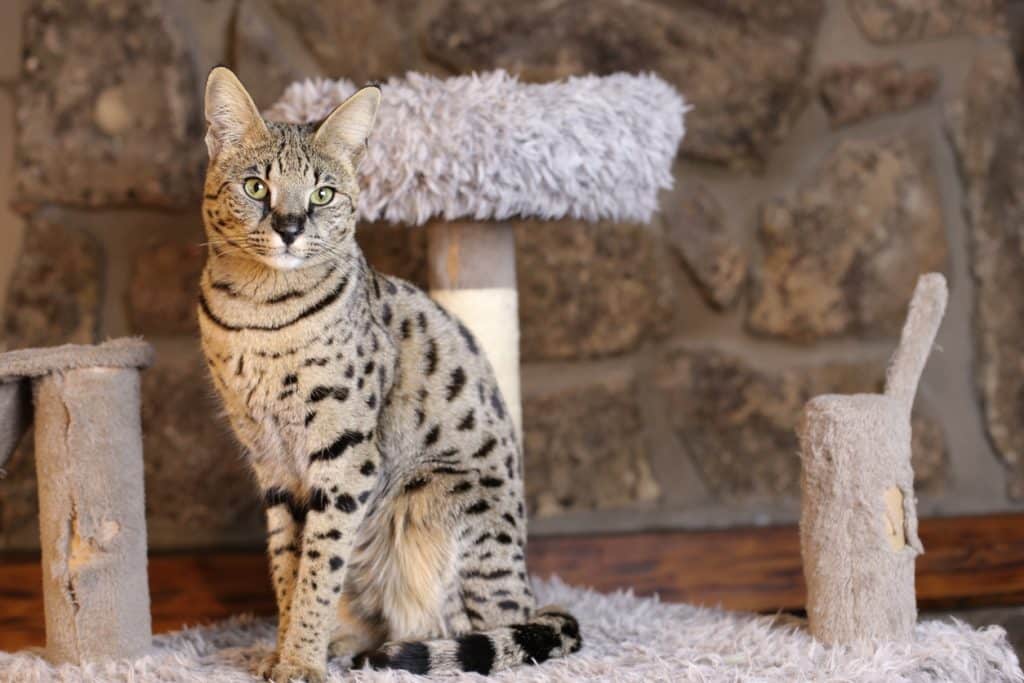
ajr_images via iStock
- Height: 25-33 cm
- Weight: 3.5-9 kg
- Coat: Shorthaired
- Colour: Spotted, marbled, and classic coat patterns in a range of colours
- Life expectancy: 17-20 years
- Personality: Inquisitive, playful, and active
- Vocal Level: Medium
- Potential issues: Only suitable for experienced pet parents, should be kept as an indoor cat with supervised outdoor access
These striking cats are instantly recognisable thanks to their large size, distinctive ears, and mottled coats. Savannah cats are descended from wild Serval cats and while they can weigh up to nine kilograms, they’re typically tall and lean. This breed is best suited to experienced pet parents thanks to their active and curious nature. There’s never a dull moment with a Savannah around, so pet parents must provide a huge amount of enrichment.
Bengal
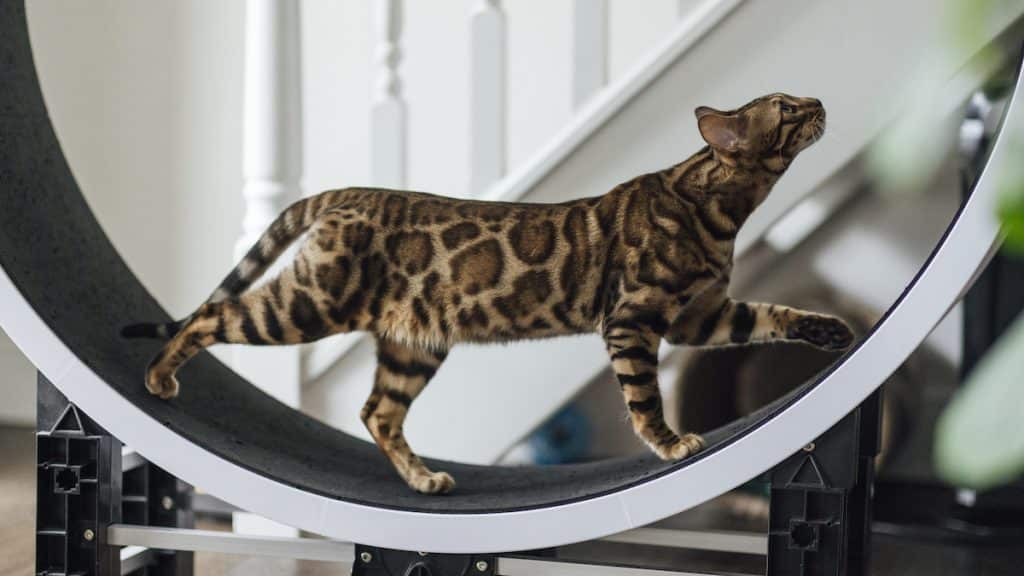
SolStock via iStock
- Height: 33-40 cm
- Weight: 3.6-7.7 kg
- Coat: Shorthaired
- Colour: Spotted marble pattern in brown, snow, and silver
- Life expectancy: 10-16 years
- Personality: Outgoing, intelligent, and active
- Vocal Level: Medium
- Potential issues: Needs an experienced pet parent and to be kept indoors only
The Bengal is a modern breed created by crossing domestic cats with Asian Leopard Cats. These intelligent cats need plenty of mental and physical stimulation—think puzzle toys, cat trees, and play opportunities that satisfy their natural hunting instincts. Bengal cats love being part of a family but may expect to be the centre of attention! They’re always looking for entertainment and don’t enjoy being left alone for long periods.
How to Best Care for a Large Cat
“Compared to the average house cat, the larger breed’s main difference is their weight and size,” said Dr Nick Horniman, veterinary surgeon and founder of online pet pharmacy MyPetsVet.
But if you’re considering getting a large-breed cat, there are a few things to bear in mind, along with the fact that they need a larger bed and more food! Dr. Horniman noted that these breeds “are often significantly more powerful in being able to jump and pounce to areas smaller cats would not be able to.” That means pet parents must ensure their homes are cat-proof and that anything breakable is secured.
“Like all cats, larger breeds need a healthy amount of exercise and play to sustain a healthy lifestyle,” explained Dr. Horniman. Many of these breeds need plenty of outdoor space, although you might choose to install a catio or take your cat for walks on a harness rather than allow them to roam freely outdoors.
Many larger cat breeds are also longhaired or semi-longhaired. “New pet parents need to be aware that larger breeds such as Norwegian forest cats can be slightly higher maintenance due to their incredibly thick double coats, which require regular brushing to prevent matting and shedding,” said Dr Horniman.
“Unfortunately, some health conditions are common in larger breeds,” added Dr. Horniman. “Hip dysplasia, cardiomyopathy, and polycystic kidney disease are among the top concerns that I see.”
If you’re convinced that a large breed is the right choice, Dr. Horniman recommends regular vet visits to ensure your new, giant cat stays happy and healthy.
